Research overview
Areas of particular interest and current study.
Intraplate alkaline magmatism
Carbonatites, unique rocks predominantly consisting of magmatic carbonate, are particularly fascinating as they reflect a complex petrogenetic history involving fundamental processes of igneous differentiation, such as liquid immiscibility and extreme degrees of fractionation. |
Geochronology and element transfer of subduction zone metamorphic rocks
Combining these data with geochronological information, using mineral separation and in situ analytical techniques, provides powerful constraints on the absolute timing and time scales of metamorphic processes. Interlayered sequence of meta-igneous blueschists and greenschists that have experienced maximum P-T conditions of about 10 kbar and 400⁰C followed by a variable greenschist-facies overprint enhanced by fluid-rock interaction during exhumation (Coastal Cordillera, Chile) |
Light element stable isotopes as geochemical tracers
On a global scale, these isotope systems can be used as tracers of surface material recycled into the Earth’s mantle and the variations of the mantle through time. On smaller scales, from outcrop to thin section, fluid-rock interaction processes can cause variable enrichment/depletion of these elements coupled with temperature-dependent isotope fractionation. Back-scattered electron image of an eclogitic micaschist with phengite (Phe) and glaucophane (Gln) overprinted by fluid-rock interaction, producing more Fe-rich mineral rims that are depleted in boron (Sesia Zone, Italy) |
Magma genesis and geochemical cycling in subduction zones
In collaboration with colleagues in the UK, Sweden, Australia and USA, we use trace element, and radiogenic (Sr, Nd, Pb, Hf) and stable (O, C) isotope geochemistry to study magma genesis and geochemical cycling in subduction zones, and the spatial and temporal patterns of volcanism at individual volcanoes (e.g. Merapi) and on arc-wide scales (e.g. Sunda arc, Indonesia). |
Pre-eruptive magmatic conditions and magmatic processes recorded in volcanic rocks Current case studies include volcanoes in the Sunda arc (Indonesia), Aeolian Islands (Italy), Santorini and the Azores. |
Rates and timescales of magmatic processes using short-lived isotopes
Past and ongoing collaborative projects have used short-lived isotopes to date Holocene volcanic rocks at Merapi (Indonesia), to constrain the timescales of potassic arc magma formation leading up to the great Tambora eruption in 1815, and to unravel short-term fluctuations in magma ascent, intrusion into the shallow magma system and degassing on a week to decade-scale prior to the 2010 Merapi eruption. |
Volatile behaviour in volcanic systems and the climatic impact of volcanic eruptions Some of our past projects have focused on the volatile behaviour and release during large-magnitude eruptions, such as the Lower Pumice 2 eruption of Santorini and the great eruption of Tambora volcano (Indonesia) in 1815. |
Volcanostratigraphy
We study individual volcanic eruptions and the overall eruptive history of volcanoes through stratigraphic field studies, mapping, field characterisation of volcanic deposits and geochronological investigations. Past and present field-based research projects along these lines have focused on volcanoes and volcanic areas in Italy, the Azores, Greece and Indonesia. |
Generation, emplacement mechanisms and numerical modelling of pyroclastic density currents
|


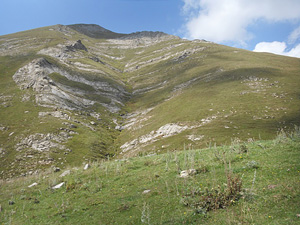 Continental intraplate alkaline magmatism produces some of the most unusual igneous rocks. Determining the influence of lithospheric and asthenospheric mantle sources as well as effects of crustal contamination on intraplate magmas helps to understand the composition and evolution of the subcontinental mantle.
Continental intraplate alkaline magmatism produces some of the most unusual igneous rocks. Determining the influence of lithospheric and asthenospheric mantle sources as well as effects of crustal contamination on intraplate magmas helps to understand the composition and evolution of the subcontinental mantle.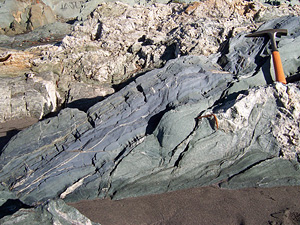 Subduction-related high-pressure metamorphic rocks represent natural probes into the subducting lithosphere and provide important information about pathways and processes of element transfer in subduction zones. Geochemical and isotopic studies of subduction zone metamorphic rocks help elucidating the scale and intensity of mass redistribution during metamorphism and the nature of slab-derived agents.
Subduction-related high-pressure metamorphic rocks represent natural probes into the subducting lithosphere and provide important information about pathways and processes of element transfer in subduction zones. Geochemical and isotopic studies of subduction zone metamorphic rocks help elucidating the scale and intensity of mass redistribution during metamorphism and the nature of slab-derived agents.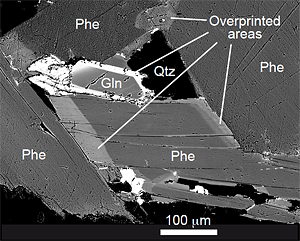 The lithium (Li), boron (B) and nitrogen (N) stable isotope systems are increasingly applied as geochemical tracers because of their large isotopic variations in different rock reservoirs and their sensitivity to fluid-rock interaction.
The lithium (Li), boron (B) and nitrogen (N) stable isotope systems are increasingly applied as geochemical tracers because of their large isotopic variations in different rock reservoirs and their sensitivity to fluid-rock interaction.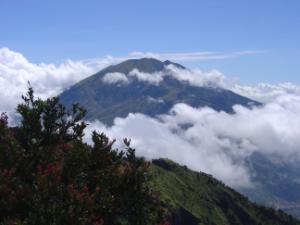 Island arc volcanoes and those situated at active continental margins are amongst the most explosive and hazardous volcanoes in the world. Erupted magmas are remarkably diverse ranging from basalt to rhyolite, and from silica-saturated to silica-undersaturated magmatic suites.
Island arc volcanoes and those situated at active continental margins are amongst the most explosive and hazardous volcanoes in the world. Erupted magmas are remarkably diverse ranging from basalt to rhyolite, and from silica-saturated to silica-undersaturated magmatic suites.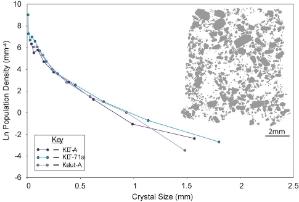
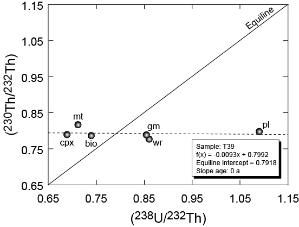 Constraining the timescales of physical and chemical processes of magma generation and evolution is arguably one of the most important research areas in igneous petrology and volcanology. Recent advances in analytical techniques have facilitated the application of radioactive disequilibria between various U-series isotopes (238U-230Th-226Ra-210Pb-210Po) to the study of rates and timescales of magmatic processes, ranging from days to ~375 kyr.
Constraining the timescales of physical and chemical processes of magma generation and evolution is arguably one of the most important research areas in igneous petrology and volcanology. Recent advances in analytical techniques have facilitated the application of radioactive disequilibria between various U-series isotopes (238U-230Th-226Ra-210Pb-210Po) to the study of rates and timescales of magmatic processes, ranging from days to ~375 kyr.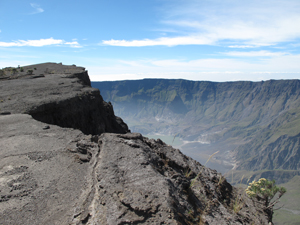 We conduct measuements of volatiles in melt inclusions and residual glass in volcanic ejecta by electron microprobe analysis, SIMS and micro-Fourier-transform infrared spectroscopy to trace the behaviour of volatile species during magma evolution and eruption. Such a topic is of considerable importance given the profound effects of volcanic eruptions on the Earth’s atmosphere and environment on all timescales.
We conduct measuements of volatiles in melt inclusions and residual glass in volcanic ejecta by electron microprobe analysis, SIMS and micro-Fourier-transform infrared spectroscopy to trace the behaviour of volatile species during magma evolution and eruption. Such a topic is of considerable importance given the profound effects of volcanic eruptions on the Earth’s atmosphere and environment on all timescales.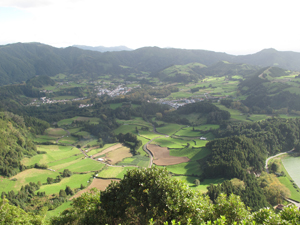 A detailed knowledge of the past activity of a volcano is essential for evaluating the potential hazards and style of future eruptive activity, and for understanding long-term magmatic and volcanic processes.
A detailed knowledge of the past activity of a volcano is essential for evaluating the potential hazards and style of future eruptive activity, and for understanding long-term magmatic and volcanic processes.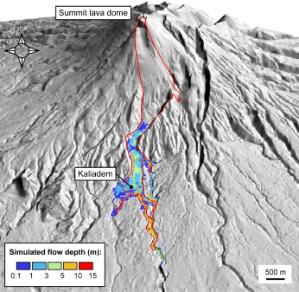 Pyroclastic density currents (PDCs) are amongst the most widespread and deadly volcanic phenomena. Through application of stratigraphic and sedimentological field investigations, ground-penetrating radar and novel numerical modeling tools we develop a detailed picture of the internal architecture as well as transport and depositional processes of PDC deposits, with the main focus on Merapi volcano, Indonesia.
Pyroclastic density currents (PDCs) are amongst the most widespread and deadly volcanic phenomena. Through application of stratigraphic and sedimentological field investigations, ground-penetrating radar and novel numerical modeling tools we develop a detailed picture of the internal architecture as well as transport and depositional processes of PDC deposits, with the main focus on Merapi volcano, Indonesia.